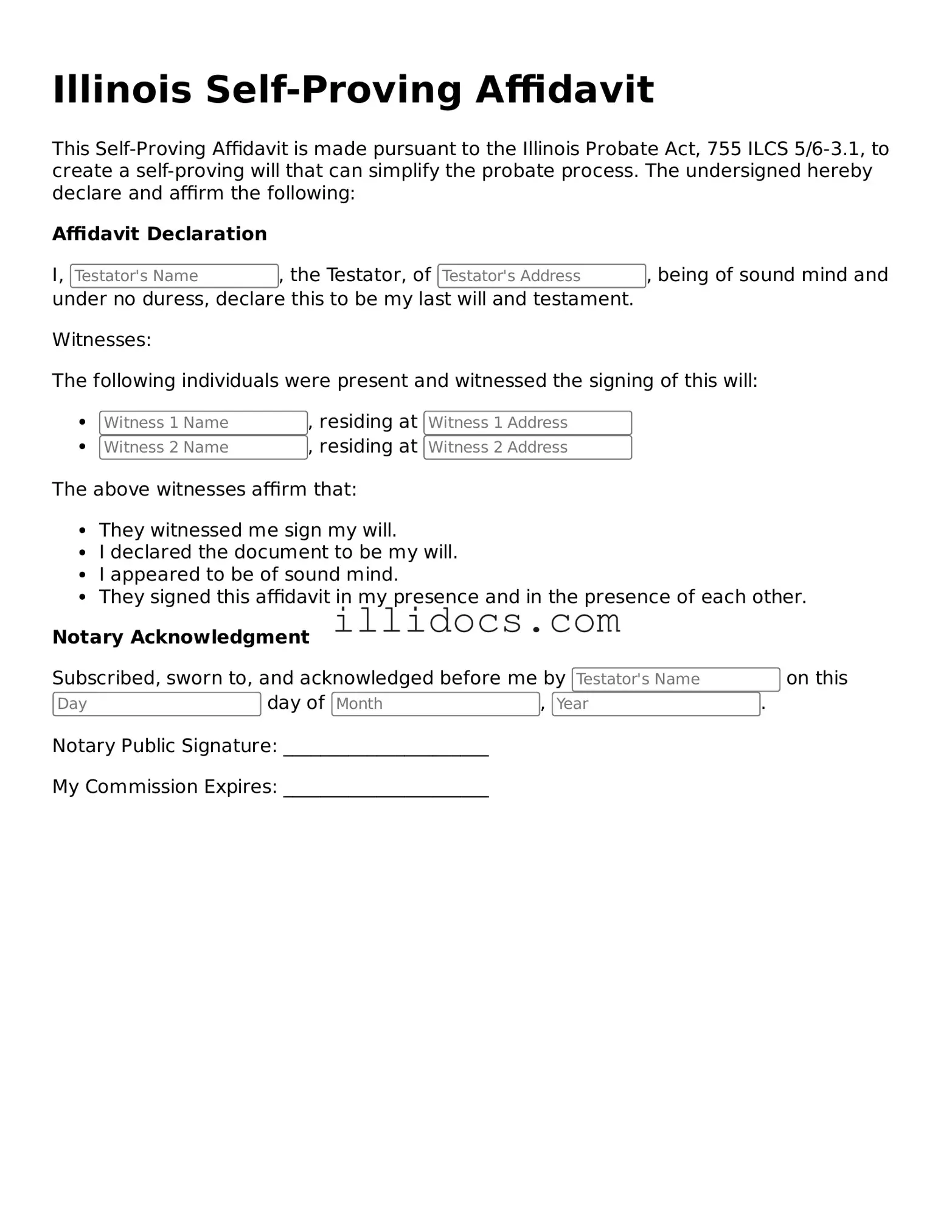What is an Illinois Self-Proving Affidavit?
The Illinois Self-Proving Affidavit is a legal document that allows a will to be validated without the need for witnesses to testify in court. When a will is accompanied by this affidavit, it simplifies the probate process. The affidavit is typically signed by the testator, the person making the will, and the witnesses in front of a notary public. This ensures that the will is recognized as valid, streamlining the administration of the estate after the testator's death.
Why should I use a Self-Proving Affidavit with my will?
Using a Self-Proving Affidavit can save time and reduce complications during the probate process. If a will is self-proved, the court can accept it without requiring the witnesses to appear and testify about their signatures. This can be particularly beneficial if witnesses are unavailable or if their memories about the signing of the will are unclear. Overall, it provides an extra layer of security and clarity regarding the testator's intentions.
How do I create a Self-Proving Affidavit?
Creating a Self-Proving Affidavit involves a few key steps. First, you should draft your will, ensuring it meets all legal requirements. Next, when you sign the will, you and your witnesses must also sign the Self-Proving Affidavit in the presence of a notary public. It's crucial that all parties understand the document they are signing. After completing the affidavit, it should be stored with the will, so it is readily available when needed during the probate process.
Is a Self-Proving Affidavit necessary for all wills in Illinois?
No, a Self-Proving Affidavit is not required for all wills in Illinois, but it is highly recommended. If a will does not include this affidavit, the witnesses may need to testify in court to prove the will's validity. This can lead to delays and added stress for the family during an already difficult time. Therefore, including a Self-Proving Affidavit can provide peace of mind and facilitate a smoother transition for your loved ones after your passing.
